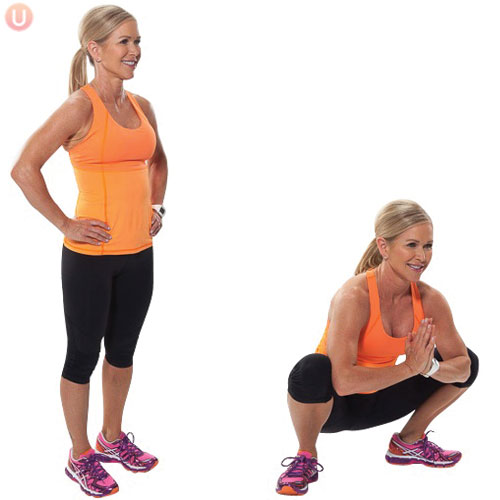How To Do Yogi Squat
Yogi Squat is one of the best hip openers you will find. Often dubbed “the pose of youth”, this position tells you a lot about how young (or how old) your body is. As we age, we often neglect movement that includes larger range of motion. Our strides get short and, in turn, a walking stride starts to resemble more of a shuffle. This is due to tight hip flexors and hip joints in general. When these areas are short and tight, you are unable to take a longer stride. In addition, weak glutes add to the whole picture. If these symptoms sound familiar, you should learn how to do yogi squat pose.
When you first go into yogi squat, don’t expect it to look like the picture you see. If you are tight around your hips, it may take some time and plenty of tries in order for you to get low in this pose. Keep trying! Keep working at it! You will benefit from the ability to get deep and stretch your legs wider.
An important factor in getting deep in this pose is knee health. If you have had surgery or any injuries to your knees, this may prevent you from squatting down low. If that is the case, modify the pose by staying up a bit higher and finding a position that works WITH your knees, not against them. Also, be sure to keep more weight through your heels. This will transfer the pressure away from the knees and into the glutes.
Yogi squat can be uncomfortable when you are very tight in your hips. Once you begin to practice this position a few times, you will notice it begin to feel more tolerable and, with any luck, one day you will look forward to sitting into this pose for longer periods of time because it feels so good!
1) Start with your feet slightly wider than shoulder distance apart and your toes turned out.
2) Bend your knees and use your leg muscles to slowly lower your hips to the floor. Go as deep as you can while keeping your heels on the floor.
3) Elbows pressing into knees and knees hugging into elbows the upper and lower body stay active.
4) Straighten legs to return to standing.
Targets: glutes, thighs, hamstrings
